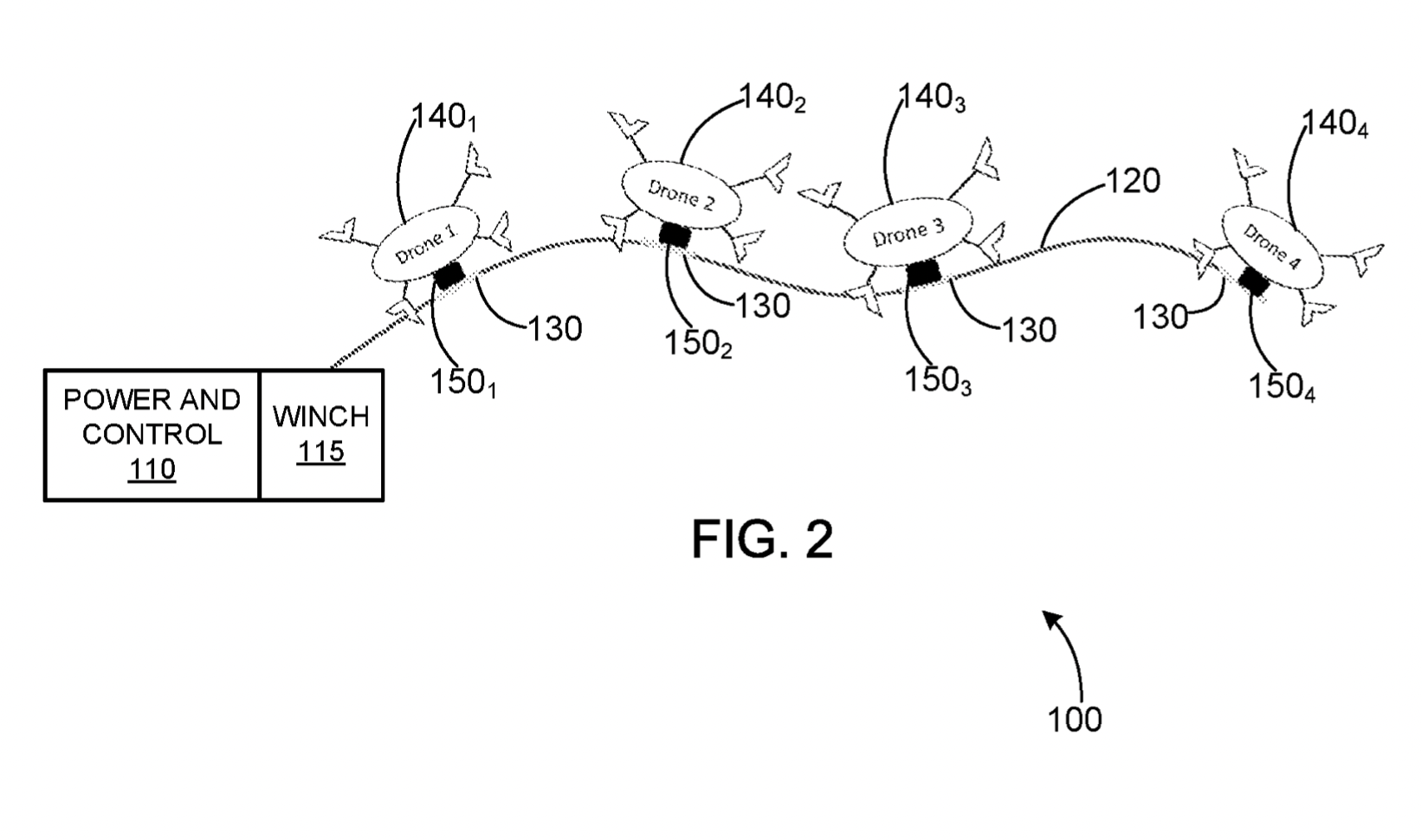A New In-Flight Recharging System Aims to Overcome Electric Drones’ Biggest Limitation—Battery Life
by DRONELIFE Staff Writer Ian J. McNab
The internet, GPS, and microwave ovens were all the result of military research, and now, that ingenuity might be used to make drones that never have to land. The U.S. Army Combat Capabilities Development Command Army Research Laboratory, based in Adelphi, Maryland, recently received a patent for a new drone tethering system, (serial #US2024286773) designed to extend drone capabilities by creating new recharging systems using other UAVs.

The system is designed to eventually allow for in-flight recharging of UAVs using a central “power bank” drone that could charge up multiple flight mates, similarly to how an air refueling plane like a KC-135 Stratotanker can restock combat planes, extending their mission timelines and making them more survivable in mid-air.
The full text of the abstract reads as follows, describing “(a) powered drone tether and deployment system including a plurality of drone coupling/decoupling mechanisms which enable the coupling/decoupling thereto of rechargeable drones in flight. A lead drone may carry the drone tether so as to extend the tether from a base station supplying power thereto such that one or more rechargeable drones may attach to coupling/decoupling mechanisms for charging, and then detach from the coupling/decoupling mechanisms to perform independent flight tasks.”
Basically, the idea is to make drones fly longer, removing one of the largest challenges of electric flight- battery life. The US military has clearly been interested in extending effective flight length of UAVs, investing in or whitelisting many long-range drones As most drones are electrically powered, they struggle over long distances, where gasoline, diesel, or aircraft-fuel powered UAVs can fly further.
However, if they could charge while in flight, the potential for electrically powered drones to be used in longer term, fixed positions for applications like surveillance or communications could exponentially increase, giving the US military more flexibility in dynamic operating environments. A drone could be a movable watch tower, or a completely flexible communications antenna system that could be remotely piloted to where its needed and left there to be automatically recharged by UAV.
While we’re probably still a few years off from seeing the tether vision fully realized, the future range of drones could be massively increased if they didn’t have to land to recharge, making this an exciting promise of things to come.
Read more:
- Innovative UAV Patent Aims to Protect Wildlife from Becoming Roadkill
- Alarm.com Secures Patent for Drone-Based Pre-Surveillance: Enhancing Property Security with UAV Technology
- Deep Inspection Secures Patent for AI-Driven Drone Aircraft Inspection System, Aiming to Enhance Safety and Efficiency
Ian McNabb is a staff writer based in Boston, MA. His interests include geopolitics, emerging technologies, environmental sustainability, and Boston College sports.

Miriam McNabb is the Editor-in-Chief of DRONELIFE and CEO of JobForDrones, a professional drone services marketplace, and a fascinated observer of the emerging drone industry and the regulatory environment for drones. Miriam has penned over 3,000 articles focused on the commercial drone space and is an international speaker and recognized figure in the industry. Miriam has a degree from the University of Chicago and over 20 years of experience in high tech sales and marketing for new technologies.
For drone industry consulting or writing, Email Miriam.
TWITTER:@spaldingbarker
Subscribe to DroneLife here.







Leave a Reply